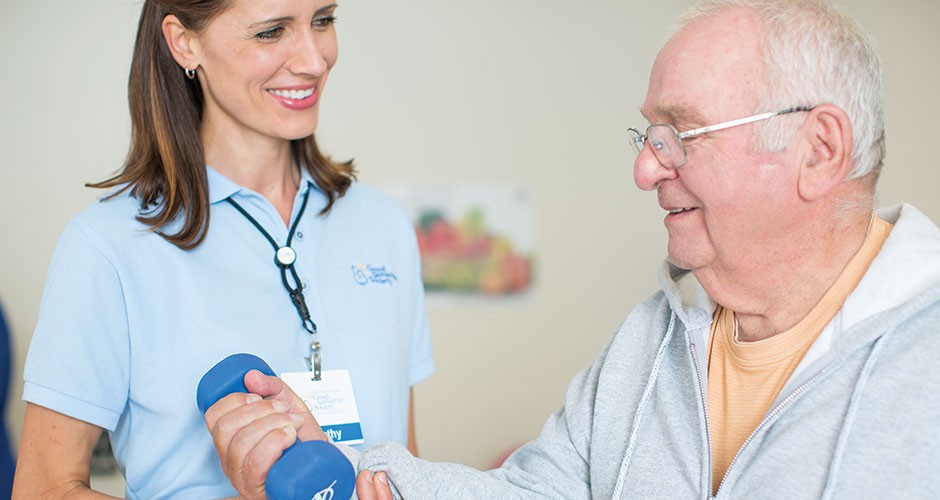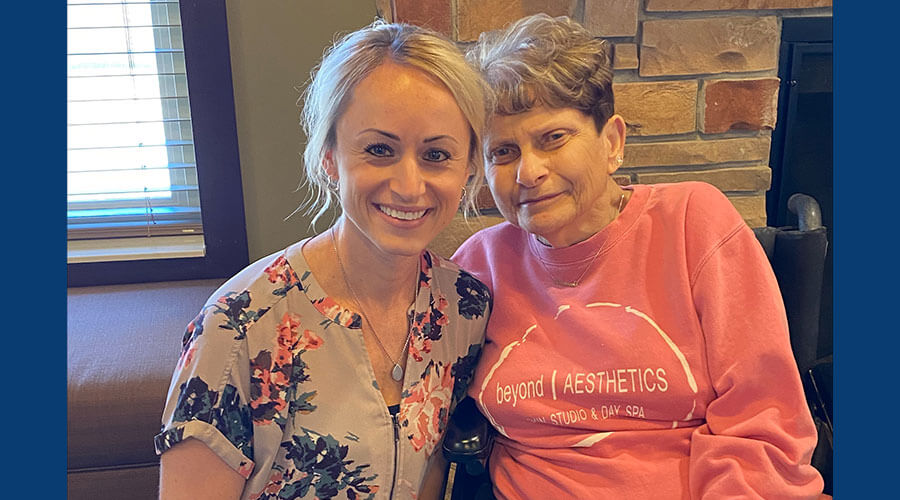Why would I need rehab therapy?
You’re recovering from an illness, a fall, surgery or a stroke, and you need a little help getting back to full strength.
Your doctor may have recommended physical therapy to re-teach your body how to move properly, occupational therapy to re-learn how to get around safely, or speech therapy with a speech-language pathologist to re-connect your brain and muscles so you can communicate, think or swallow more effectively.
This after-hospital care — also called post-acute rehabilitation, transitional care, rehab therapy or inpatient therapy — can help you return to everyday life as safely as possible.
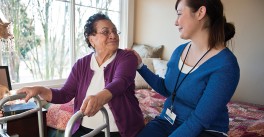
Where do I go for therapy?
Long-term care hospitals, rehab centers, post-acute and skilled care centers, and nursing homes can provide your post-acute care, as can home healthcare providers.
Check your insurance policy and Medicare coverage to see what services they might help pay for, and where they might cover your stay.
At the Good Samaritan Society, we believe therapy should be about caring for the person, not just treating the injury.
If you choose to receive your therapy at one of our Good Samaritan Society locations, our team of expert therapists will guide, advise and encourage you, and our compassionate staff members will be here to address your wants, needs and even fears with love and kindness.
Here is what to expect in your first days with us.
Before you leave the hospital:
- Once you’ve decided to receive therapy from the Good Samaritan Society, expect a welcome visit at the hospital from an admissions coordinator or social worker. This is a great time to ask questions and learn more about what to expect in your time at the Good Samaritan Society.
- Often, we will help you relocate to our center, but you may prefer a family member or friend help you.
Once you arrive at our location:
- After filling out admissions paperwork at our location, you’ll meet with a nurse who will take your vital signs.
- We’ll show you around the campus, help you settle into your post-acute suite, and make sure you have everything you need to feel at home during your recovery stay.
- Your family is very welcome to come for a tour and is always encouraged to be a part of your stay here.
- Our therapists will meet with you in the first day or two for an evaluation. The therapists will test your physical, functional, cognitive and communication capacity and ask a lot of questions about the environment you want to return to. Together, you’ll set your therapy goals.
How long will I be here?
It all depends on what you’re recovering from. It could be a few days or a few months.
The frequency of therapy is determined based on the needs of the individual and could involve multiple sessions per day, depending on your needs and progress in your recovery. Therapy sessions can last anywhere from 15 to 90 minutes.
In general, for each day you are in the hospital, expect three days to recover.
What will I be doing?
Your exercises will likely focus on strength, endurance, function, thinking, communication, balance, dressing, taking care of yourself and possibly swallowing.
Here are seven common exercises to expect:
1. Mobility exercises
We’ll start with exercises that help you move in bed, sit up, stand, get out of a chair, or move around with a wheelchair, walker or cane.
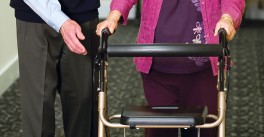
2. Range of motion exercises
Often coupled with weights or resistance bands, you’ll move your arms and legs to restore your muscle strength.

3. Swallowing
Therapists will identify and prescribe specific exercises to regain the strength and function to swallow safely again.
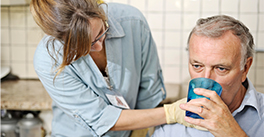
4. Balance exercises
To work on your balance, you may do things like weave around cones, pick objects off the floor, stand with your eyes closed, step backward or catch balls.

5. Activities of daily living
Therapists will help you restore daily skills like cooking, getting dressed, climbing stairs and putting on your shoes.
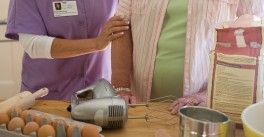
6. Cognitive retraining
Therapists will help you regain cognitive skills like attention, memory, problem solving and sequencing.
7. Communication
You may or may not have difficulty with your speech, but many people have difficulty communicating which involves understanding, following directions and communicating in complex sentences. Therapists will help you regain those skills.
Your therapy sessions will be tailored to your individual needs, geared toward helping you feel like yourself again.
What about when I go home?
When it’s time to leave the Good Samaritan Society, we’ll do an in-home assessment with you to make sure it’s as safe as possible, and that you are able to do the activities you need in order to live there.
We’ll provide education and may recommend continued therapy to maintain your strength.
Learn more about the three types of rehab therapy

